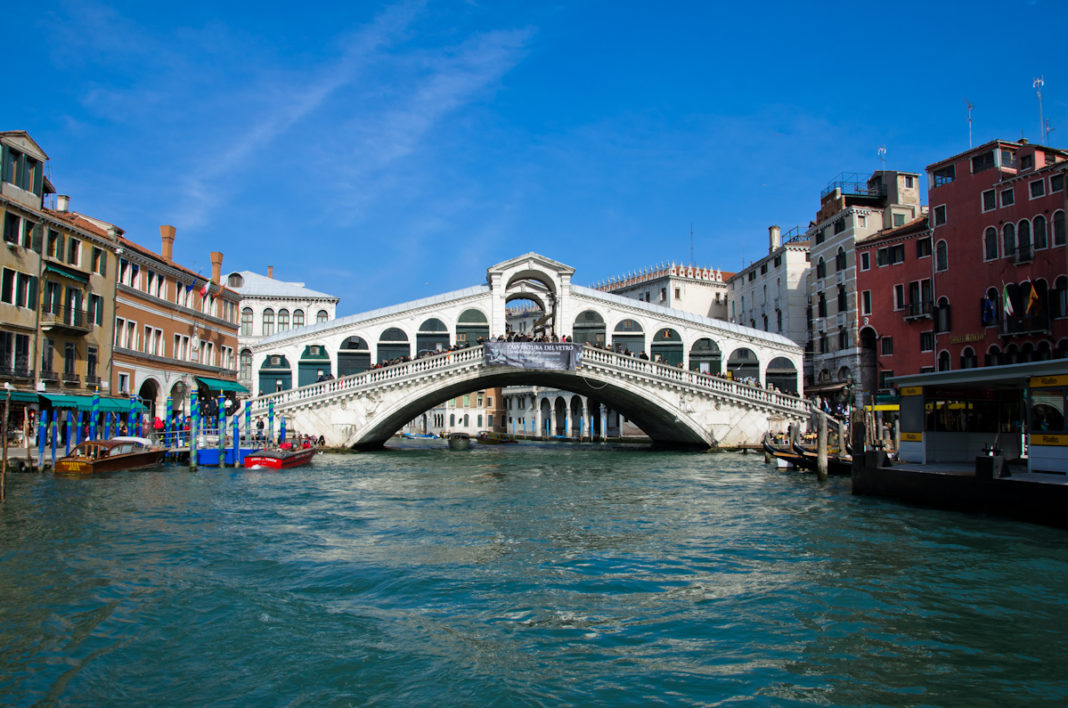The Rialto Bridge consists of a single stone-arch span that supports a broad rectangular deck carrying two arcades of shops fronting three roadways. The lower chord of the bridge is only 25 meters in length, while the width is 20 meters. To support the wide stone arch in the soft alluvial soil, 6,000 timber piles were driven under each abutment, and the bed joints of the stones were placed perpendicular to the thrust of the arch.
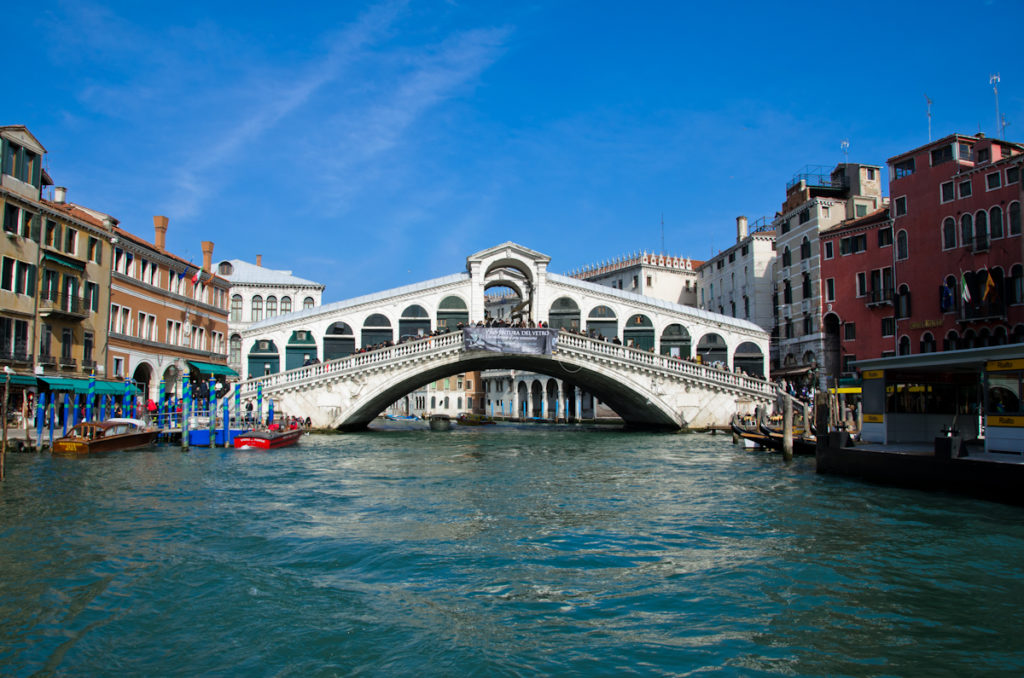
The bridge has three walkways: two along the outer balustrades, and a wider central walkway leading between two rows of small shops that sell jewelry, linens, Murano glass, and other items for the tourist trade.
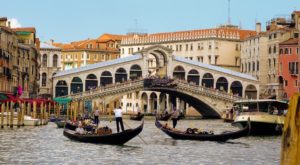
The idea of rebuilding the bridge in stone was first proposed in 1503. Several projects were considered over the following decades. In 1551, the authorities requested proposals for the renewal of the Rialto Bridge, among other things. Plans were offered by famous architects, such as Jacopo Sansovino, Palladio, and Vignola, but all involved a Classical approach with several arches, which was judged inappropriate to the situation. Michelangelo also was considered the designer of the bridge.
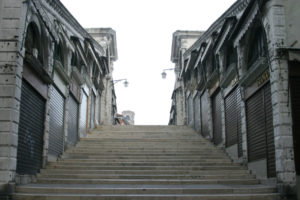
The present stone bridge, a single span designed by Antonio da Ponte, began to be constructed in 1588 and was completed in 1591. It is similar to the wooden bridge it succeeded. Two ramps lead up to a central portico. On either side of the portico, the covered ramps carry rows of shops. The engineering of the bridge was considered so audacious that architect Vincenzo Scamozzi predicted future ruin. The bridge has defied its critics to become one of the architectural icons, and top tourist attractions, in Venice.
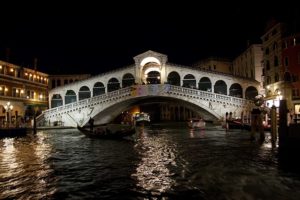
It’s hard to miss the Ponte di Rialto. From the train station or the Piazzale Roma, simply follow the signs to “Rialto.” The same applies if you’re walking from the Piazza San Marco. (Just head for the clock tower, cut through the arched passage, and follow the upscale shopping streets known as the Mercerie until you reach the Grand Canal, then turn right and walk two blocks to the bridge.) Another option is to approach the bridge by vaporetto, or water bus.
According to Wikipedia/ europeforvisitors





